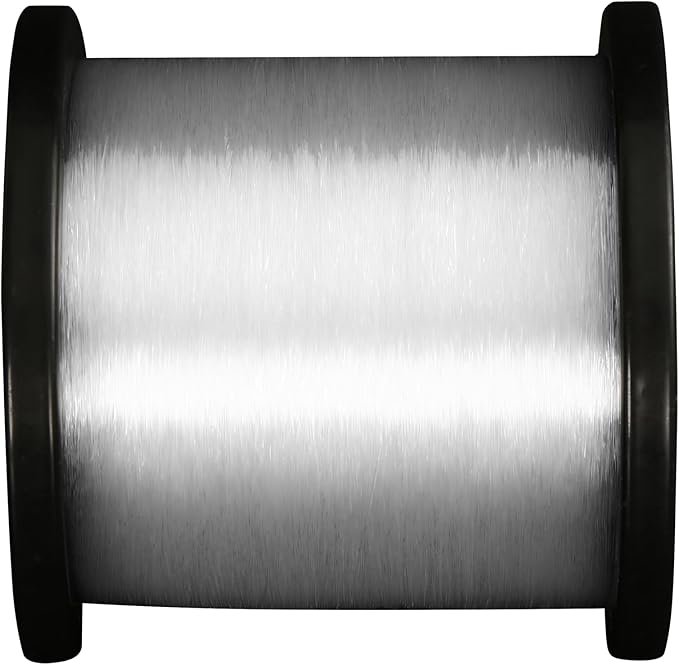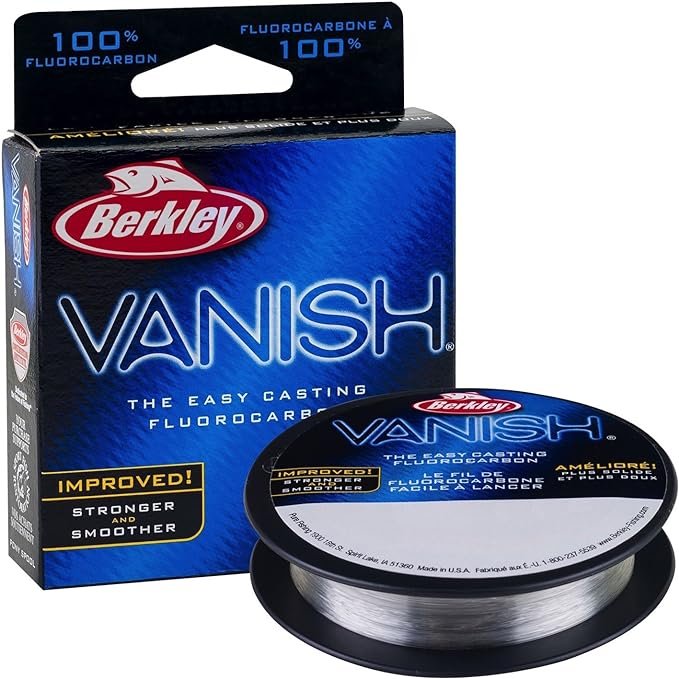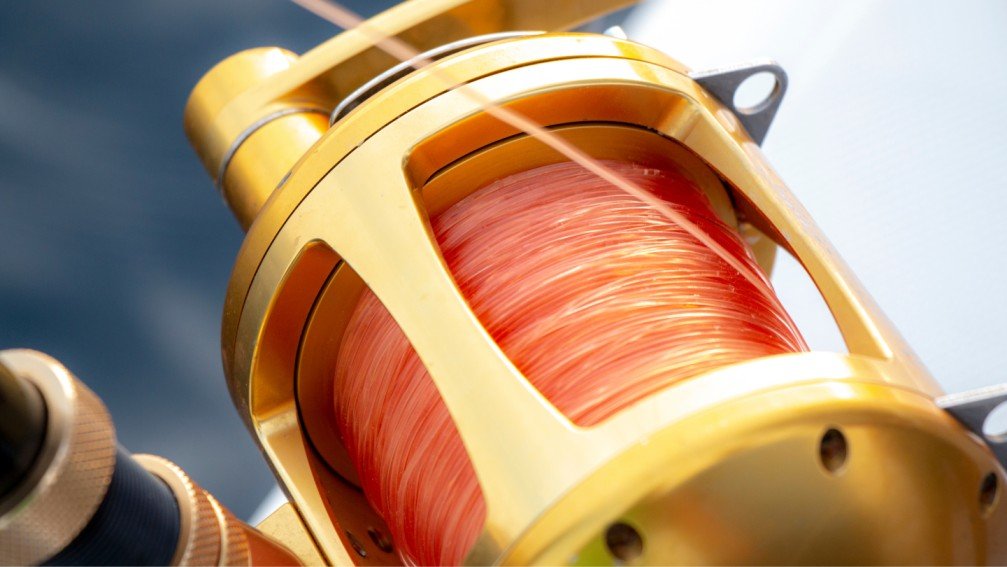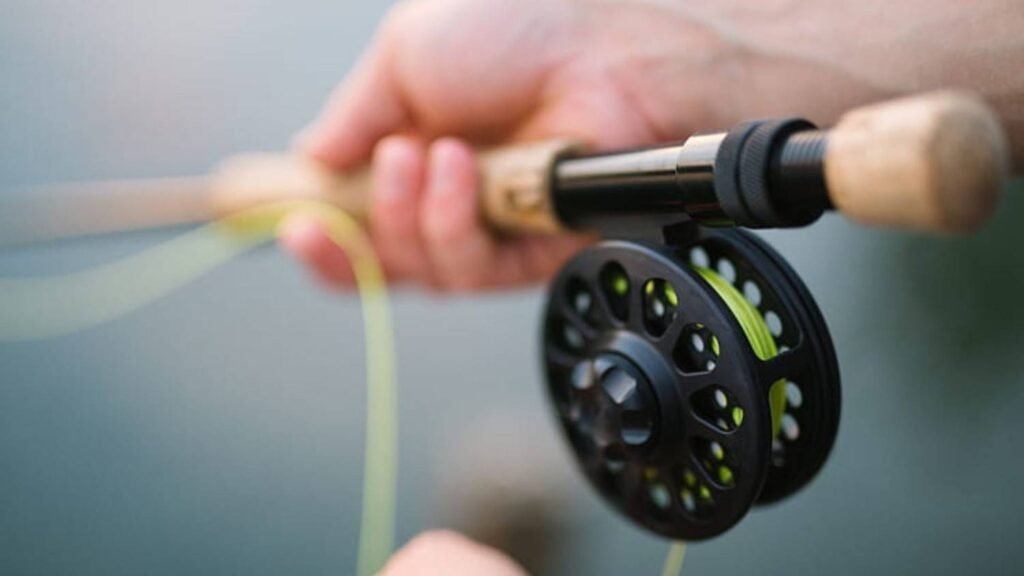Monofilament fishing line is more stretchable and buoyant, while fluorocarbon fishing line is denser and less visible underwater. Monofilament and fluorocarbon fishing lines each have unique characteristics that cater to different fishing needs.
Monofilament is known for its flexibility, making it easier to handle and knot. It floats, making it ideal for topwater baits. On the other hand, fluorocarbon is denser, providing better abrasion resistance and sinking faster. Its low visibility underwater makes it perfect for clear water fishing.
Choosing between these lines depends on factors like fishing conditions, target species, and personal preference. Understanding their differences helps anglers make informed decisions for a successful fishing experience.
Monofilament Fishing Line
The monofilament fishing line has been a popular choice for anglers for decades. It’s known for its versatility, ease of use, and affordability. Let’s dive deeper into its components and features.
Material Composition
Monofilament fishing line is made from a single strand of nylon. The manufacturing process involves extruding nylon polymers to create a long, continuous line. This single-strand construction gives monofilament its name.
Key Characteristics
Monofilament fishing line offers several key characteristics that make it a go-to choice for many fishing enthusiasts:
Stretchability: Monofilament lines can stretch under pressure. This feature helps absorb shocks during fish fights.
Buoyancy: Monofilament is less dense than water, making it float. This is ideal for topwater fishing.
Visibility: It comes in various colors. Anglers can choose the visibility level they need.
Affordability: Monofilament lines are generally cheaper than other types.
Knot Strength: It holds knots well, ensuring fewer line breaks.
|
Feature |
Detail |
|---|---|
|
Material |
Nylon |
|
Stretchability |
High |
|
Buoyancy |
Floats |
|
Visibility |
Various Colors |
|
Cost |
Affordable |
|
Knot Strength |
Excellent |
In summary, the monofilament fishing line is a versatile and cost-effective choice. Its unique properties make it suitable for various fishing styles and conditions.
Fluorocarbon Fishing Line
Fluorocarbon fishing line is popular among anglers for its unique properties. It offers certain advantages that make it a preferred choice in various fishing scenarios.
Material Composition
Fluorocarbon line is made from polyvinylidene fluoride. This material is different from nylon, used in monofilament lines.
The manufacturing process involves extruding the fluorocarbon polymer. This process enhances its density and strength.
Fluorocarbon is also more resistant to UV light. This makes it durable for prolonged exposure to the sun.
Key Characteristics
Invisibility: Fluorocarbon has a refractive index close to water. This makes it nearly invisible to fish.
Sensitivity: It transmits vibrations better. Anglers feel bites more easily.
Density: Fluorocarbon is denser than water. This allows it to sink faster.
Durability: It is resistant to abrasion. This makes it ideal for fishing in rough conditions.
Waterproof: Fluorocarbon does not absorb water. This maintains its strength and performance.
Fluorocarbon lines are often used in clear water. They help in situations where fish are easily spooked.
Durability And Strength
Fishing line durability and strength are crucial. These factors impact your fishing success. Let’s explore how monofilament and fluorocarbon lines compare.
Monofilament Durability
Monofilament fishing line is known for its flexibility and stretchability. This makes it resistant to sudden shocks and jerks.
Its abrasion resistance is moderate. It can withstand rubbing against rough surfaces underwater. However, it may not be as durable as other types.
|
Feature |
Monofilament |
|---|---|
|
Flexibility |
High |
|
Stretchability |
High |
|
Abrasion Resistance |
Moderate |
Fluorocarbon Strength
Fluorocarbon fishing line is prized for its strength. It is more resistant to abrasion than monofilament.
Fluorocarbon is also denser. This increases its durability and makes it sink faster. It is less visible underwater.
High abrasion resistance
High density
Less visibility underwater
Visibility Underwater
Visibility underwater is crucial for fishing success. The type of fishing line affects how visible it is to fish. This can influence your catch rate. Let’s explore how monofilament and fluorocarbon fishing lines differ in terms of visibility underwater.
Monofilament Visibility
Monofilament fishing line is often more visible underwater. It tends to have a slight color tint. This can make it easier for fish to see. While this may not be an issue in murky waters, it can be problematic in clear waters.
Monofilament is also more reflective. It can catch light and create flashes underwater. Fish can detect these flashes, which might scare them away. This makes monofilament less ideal for clear water fishing.

Force Monofilament Fishing Line
Fluorocarbon Visibility
Fluorocarbon fishing line is less visible underwater. It has a refractive index similar to water. This makes it nearly invisible to fish. Fluorocarbon does not reflect light as much as monofilament.
In clear water, fluorocarbon is a better choice. Fish are less likely to see it. This can increase your chances of catching fish. Many anglers prefer fluorocarbon for this reason.
Sensitivity And Stretch
Understanding the sensitivity and stretch of fishing lines is crucial. Monofilament and fluorocarbon lines have unique properties. These characteristics impact your fishing success.
Monofilament Sensitivity
Monofilament fishing line is known for its flexibility. This flexibility reduces its sensitivity. Anglers may not feel light bites easily.
Monofilament has more stretch. This can be advantageous in some situations. It helps absorb shocks from strong fish.
Due to its stretch, monofilament is forgiving. This makes it suitable for beginners. It’s also cheaper and more accessible.
Fluorocarbon Stretch
Fluorocarbon fishing line is stiffer. This stiffness increases sensitivity. Anglers can feel even the slightest nibble.
Fluorocarbon has less stretch compared to monofilament. This makes it ideal for deep-water fishing. The reduced stretch allows for better hook sets.
Fluorocarbon is also nearly invisible underwater. This can lead to more bites. Fish are less likely to see the line.
|
Property |
Monofilament |
Fluorocarbon |
|---|---|---|
|
Sensitivity |
Low |
High |
|
Stretch |
High |
Low |
|
Visibility |
Visible |
Nearly Invisible |
|
Cost |
Low |
High |
Cost Comparison
Fishing lines come in different types, with monofilament and fluorocarbon being popular choices. Understanding the cost difference between them is crucial for anglers. This section delves into the cost comparison of both fishing lines.
Monofilament Costs
Monofilament fishing lines are generally cheaper. They are affordable and accessible. A standard spool of monofilament costs between $5 and $10. This makes it a budget-friendly option for many anglers. Bulk spools offer even greater savings. The low cost doesn’t compromise its effectiveness. Monofilament remains popular for its balance between cost and performance.
Fluorocarbon Costs
Fluorocarbon fishing lines are more expensive. The cost reflects their advanced properties. A standard spool of fluorocarbon can range from $15 to $40. The high price is due to its superior strength and invisibility underwater. Anglers willing to invest in quality often choose fluorocarbon. It offers enhanced sensitivity and durability. Bulk spools of fluorocarbon are also available. These can provide some cost savings but remain pricier than monofilament.
|
Fishing Line Type |
Cost Range (per spool) |
|---|---|
|
Monofilament |
$5 – $10 |
|
Fluorocarbon |
$15 – $40 |

Berkley Vanish Fluorocarbon Fishing Line/Leader Material
Expert Recommendations
Choosing the right fishing line can boost your success on the water. Experts often recommend different lines for varied conditions. Understanding the best situations for each can improve your fishing experience. Here’s a detailed look at expert recommendations for monofilament and fluorocarbon fishing lines.
Best Situations For Monofilament
Monofilament fishing line is ideal for specific fishing scenarios. Its unique properties make it suitable for certain conditions.
Topwater Lures: Monofilament floats, making it perfect for topwater lures.
Beginner Anglers: Easier to handle and knot, ideal for beginners.
Cost-Effective: Generally cheaper, ideal for budget-conscious anglers.
Stretch Factor: Provides more stretch, reducing the chances of line breaks.
Clear Water: Less visible in clear water, good for stealthy fishing.
Best Situations For Fluorocarbon
Fluorocarbon fishing line offers distinct advantages in various fishing situations. It excels in specific conditions due to its unique properties.
Deep Water: Sinks faster, ideal for deep-water fishing.
Abrasion Resistance: More resistant to abrasion, perfect for rocky areas.
Invisibility: Nearly invisible underwater, great for spooky fish.
Less Stretch: Provides better sensitivity and hook-setting power.
Heavy Cover: Stronger and more durable, suitable for fishing in heavy cover.
Both monofilament and fluorocarbon have unique benefits. Choosing the right one depends on your fishing needs and conditions.
Check also the Difference between Copolymer And Monofilament Fishing Line: Expert Guide
Choosing between monofilament and fluorocarbon fishing lines depends on your specific needs. Monofilament offers versatility and affordability. Fluorocarbon provides invisibility underwater and higher sensitivity. Understanding their differences helps you make informed decisions for successful fishing trips. Always consider water conditions and fish species when selecting your fishing line.
Happy fishing!
FAQs:
Should I Use Monofilament Or Fluorocarbon?
Use monofilament for flexibility and buoyancy. Choose fluorocarbon for invisibility underwater and abrasion resistance. Select based on your fishing needs.
What Is Fluorocarbon Fishing Line Best For?
Fluorocarbon fishing line is best for clear-water fishing. It offers low visibility underwater and high sensitivity. Its abrasion resistance makes it ideal for rough terrains. Fluorocarbon sinks faster, making it perfect for deep-water fishing.
What Is Monofilament Fishing Line Best For?
Monofilament fishing line is best for its versatility. It offers excellent knot strength, abrasion resistance, and ease of use. Ideal for freshwater and saltwater fishing, it provides a good stretch to absorb shocks, making it perfect for various fishing techniques and species.
What Type Of Fishing Line Is Best All Around?
A monofilament line is the best all-around fishing line. It’s versatile, affordable, and easy to handle. Monofilament works well in various fishing conditions and is suitable for beginners and experienced anglers alike.



